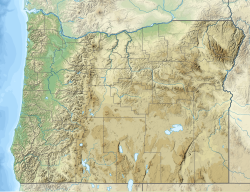| Nestucca Formation | |
|---|---|
| Stratigraphic range: Bartonian-Priabonian ~ | |
| Type | Formation |
| Lithology | |
| Primary | Siltstone |
| Other | Sandstone, shale |
| Location | |
| Coordinates | 45°12′N124°00′W / 45.2°N 124.0°W |
| Approximate paleocoordinates | 45°30′N111°42′W / 45.5°N 111.7°W |
| Region | Tillamook County, Oregon |
| Country | United States |
| Type section | |
| Named for | Nestucca River |
The Nestucca Formation is a geologic formation in Oregon. It preserves fossils dating back to the Bartonian to Priabonian stages of the Eocene period. [1]

